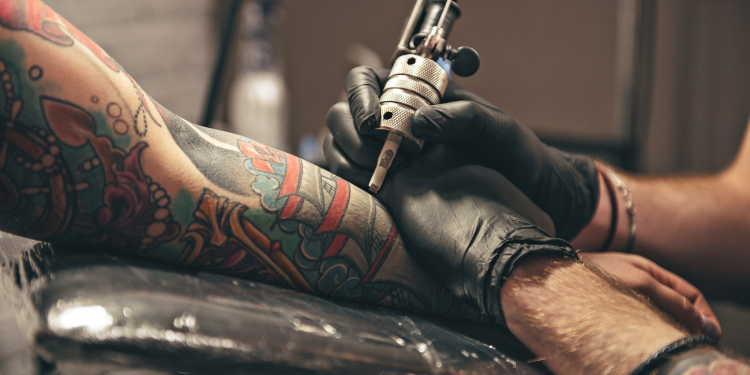Scalp micro pigmentation is a hair loss solution for men and women that reduces the appearance of thinning hair and bald spots. A scalp tattoo can also cover scars and restore receding hairlines. The development of scalp micropigmentation was inspired by the invention of permanent makeup and dermal micropigmentation techniques. Here is more information about the history and practice of scalp tattooing:
Table of Contents
Development of Permanent Makeup
The early development of permanent makeup inspired the use of hair tattoos as a lasting cosmetic solution. Sutherland McDonald, a well-known English tattoo artist, completed the first documented permanent makeup treatment in 1902. These tattoos would become a trend that evolved into the permanent makeup industry. Many salons across the United States adopted permanent makeup in the early 1900s. Specialists used permanent makeup application techniques to give clients eyeliner, darker brows, lip color, and cheek blush.
Pigmentation For Cosmetic Reasons
In the early 1990’s, Dr. Alvaro Traquina conducted scalp tattoo experiments using the dermal micropigmentation technique. This technique involved applying iron oxide pigments of different colors using precise, specialized tools that targeted the upper dermal layer. Tranquina’s Hair Transplant Clinic of Sacramento completed trials using the pigmentation technique for 62 clients who experienced scalp scarring. The practitioners were able to camouflage scars by applying the iron oxide pigment in tiny dots across the scalp. This micropigmentation procedure created a natural-looking buzzcut hairstyle for clients. These clients found the technique less time-consuming and affordable than hair transplants and restoration medication. The results of these initial treatments were recorded and published in 2001 with the conclusion that using pigment microdots to camouflage scalp scars is safe and efficient.
Modern Scalp Micropigmentation
Hair tattoo clinics in the early 2000s began switching from iron-based pigment to natural-looking carbon-based pigments that blended better with a range of hair colors and skin tones. These artists helped scalp micropigmentation grow from a simple cosmetic tattoo to a recognized specialty sector that treats hair loss caused by conditions like alopecia. As scalp micropigmentation artists practiced their skills, they applied their creativity to enhance pigment placement, creating a more natural look and customizable hairlines. Established micropigmentation clinics featured trainers who helped new artists practice tattoo color, density, hand technique, and hairline design skills.
Scalp Micropigmentation For Hair Loss
The scalp pigmentation procedure applies the pointillism technique to place microdots of pigment on the scalp. This pigment is adjusted to match the color of the client’s natural hair follicles and skin tone. Artists place the pigment in the upper layers of the dermis to create a permanent effect. Scalp tattoo practitioners use this technique as a cosmetic solution to camouflage thinning hair, receding hairlines, and bald spots. They apply pigment dots between natural hair follicles to create the appearance of thicker hair. They use ink and other tools designed specifically for scalp micropigmentation to place the pigment precisely and create a natural-looking result. This non-invasive treatment is suitable for men and women of all ages experiencing various types of hair loss. Artists use micropigmentation to restore clients’ hairlines and create the appearance of a fuller head of hair.
Schedule a Scalp Tattoo Consultation
Scalp tattooing is a hair loss treatment practiced by trained artists who can customize your tattoo design based on your needs and goals. During a consultation, your artist will assess your head shape and size to determine the proper placement for your hair tattoo. Once you approve of your new hairline design, your artist can begin replicating hair follicles using microdots of pigment. Contact an experienced hair tattoo artist today to learn more about scalp micropigmentation and whether you’re a good candidate.


 Home
Home









